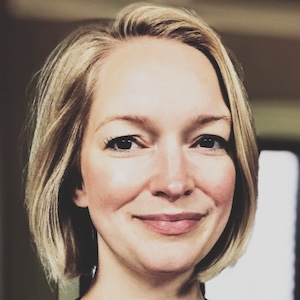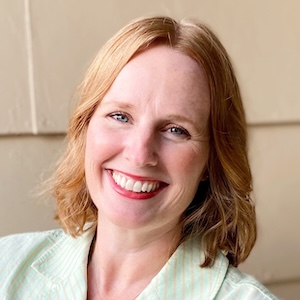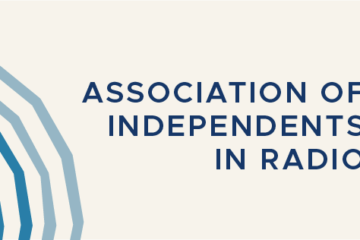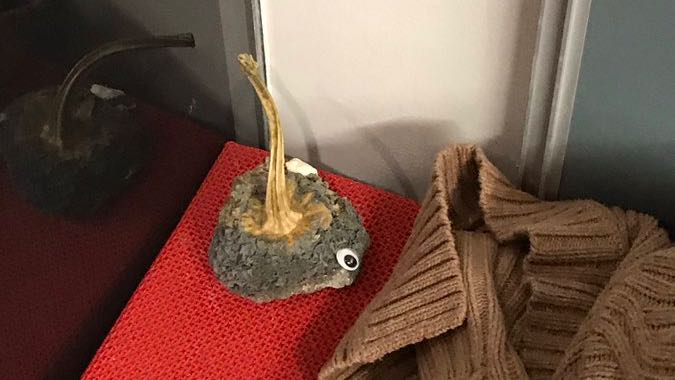Why boosting major giving may be key to pubmedia’s success

Mike Janssen, using DALL-E 3
At a time when public media faces strong financial headwinds, experts are advising stations to focus on major giving as a potential bulwark against volatile trends in underwriting and membership income.
That advice comes as recent gains in major-gift revenue appear to be slowing. According to a 2024 State of Fundraising report published in June by the Contributor Development Partnership, high-dollar gifts to stations in CDP’s National Reference File have grown year-over-year since December 2019. But that growth flattened in December 2022 and showed only a 2.1% increase in December 2023. Meanwhile, observers say stations aren’t putting enough time and resources into their major-gift programs.
“I think anyone who cuts back on major giving in the current environment is making a big mistake,” said Joyce MacDonald, CEO of Greater Public. “We’re in an environment where linear broadcast consumption is declining, and that’s true of both TV and radio, and we cannot continue to rely on growth in membership.”

MacDonald added that if stations aren’t investing more time and resources into seeking major gifts, especially for projects that go beyond building new facilities, they’re missing out on a pool of money they’ll need to be sustainable.
“The number of new donors is declining pretty rapidly,” MacDonald said. “Also, the size of your broadcast audience has a lot to do with the corporate support return on investment, because sponsors are interested in reach. And so cutting back on the one area of revenue that has the potential and the track record of major giving is a big mistake.”
Building digital audiences will take time, MacDonald said, but stations should be leaning more on major donors who love public media and “want to make sure it doesn’t just survive but thrives in the future.”
Small stations struggle with major gifts
One problem for stations that want to raise major gifts is uneven access to potential donors. As former National Federation of Community Broadcasters CEO Sally Kane noted in an August 2023 newsletter, “major gifts are more readily available among affluent populations and that leaves broad swaths of the country and a large segment of public radio stations flapping in the breeze.”
When Rachel Hubbard was appointed executive director of KOSU in Stillwater, Okla., she knew going into the role that the station’s weak membership revenue needed a boost.

“I knew that fundraising would have to be a huge focus,” she said. “Frankly, the need for major gifts was almost a reason I did not take this job. It was scary, and it was something that was a mystery, and I just didn’t feel like I needed that rejection in my life.”
In her previous roles in public media, Hubbard observed how fraught chasing major gifts can be, especially when a station lacks a full-time major gifts specialist. Landing major gifts often entails driving long distances to meet prospective donors in their homes. The hope is that a consistent relationship with prospects can lead to a significant financial reward, but there are no guarantees.
This approach differs greatly from how most stations seek smaller donations from audiences — you get out what you put in. Small sustaining gifts are less expensive to pursue and are an important part of reaching audiences of all financial backgrounds, Hubbard said, but sustainers just aren’t enough for some stations.
“We didn’t know how to cultivate relationships for major gifts,” she said, noting that she wants KOSU to have a designated major gifts officer. “We didn’t know how to shift a mindset, because we’d been telling people ‘Your $10 a month keeps the station afloat,’ but I’d been looking at our books … and I thought that there’s no way that $10 a month can get us to sustainability.”

Christina McPhillips, VP of business development for Carl Bloom Associates, a direct marketing and fundraising agency, said more stations would benefit from having an officer on staff dedicated to major gifts.
“In all my years of working with nonprofits, which is going on 20 years, I’ve never seen, as a whole, nonprofits prioritize the position of a major gifts officer as much as they should,” she said. “That’s really anecdotal, but it seems to be a position that they hire secondarily, and I do think that puts a strain on organizations.”
Because a major-gift fundraising role is highly specialized and can require larger salaries, stations with fewer resources tend to give major gifts duties to VPs and directors of development rather than dedicate an employee to it. “The immediate return on investment for a major gifts officer could be months if not years and years into the future,” McPhillips said.
While foregoing a major gifts specialist may cut costs in the present, she said, it can cause damage in the long run, especially when other staffers take on the responsibilities. “It doesn’t give it the resources and dedication that a role like that really requires,” McPhillips said.
For large stations, a mixed bag
WETA in Washington, D.C., is among the larger stations that have had continued success raising major gifts. The station has several major giving groups that support general and specific initiatives, said Kathy Connolly, VP of major and planned giving.
Leadership Circle members give more than $1,000 annually, and Legacy Circle donors have included WETA in their wills. WETA also oversees major donations that directly support Henry Louis Gates Jr.’s films, which the station presents.
The station thanks major donors by giving them access to events they would appreciate. Members of the Friends of Classical Music affinity group prefer concerts affiliated with the station’s classical station. WETA also leverages its associations with Gates, Ken Burns and PBS News Hour co-anchors Geoff Bennett and Amna Nawaz, all fan favorites.
But anecdotal evidence suggests that being a large station in a major market doesn’t shield stations from financial headwinds.

At the WNET Group in New York, major giving declined from fiscal year 2022 to FY23, according to Vanessa Wise, VP of advancement and chief strategy officer. She declined to share specifics but described what was happening behind the numbers.
“There’s a lot of fluctuation, and some of that fluctuation depends on programs we’re raising money for outside our signature programs,” she said. During FY22, the station raised money for a special democracy and civics initiative and brought in major gifts for a 2023 American Masters documentary about Dr. Anthony Fauci. “FY22 was skewed,” Wise said.
Major gifts also suffered because of what Wise calls “the blessing and the curse of angel funders.” For a few years straight, two of the organization’s board members donated seven-figure amounts annually. That kind of support “masks sustainability issues,” she said, but when the angel funders pulled back on their donations, the major-gifts portfolio lost strength.
Going forward, WNET is focusing on diversifying its portfolio of major gifts, whether they come from board members, new donors or bequests. Wise said WNET has also been seeking donations for general funds.
“We’ve had a lot of success in bringing in dollars … from donors who either don’t watch specific programs enough to want to give to them, or they don’t care about having their name on the air, but they philosophically believe in public media’s role in the news and want to enable us to have resources to be able to experiment,” Wise said.
Planned gifts and bequests are your best friend
NPR saw a slight year-over-year increase in major giving from FY22 to FY23, according to Julie Parr, VP of development. “We attribute this to some realized bequests and that we filled some open positions within development,” Parr said in an email, including the 2021 hiring of Leora Hanser as CDO. Parr joined NPR in 2023.
Hanser said the network’s famed gift from Joan Kroc in 2003 transformed how it views major giving’s potential. “Obviously the Kroc gift is really an outlier, but it has certainly been a point of inspiration for many of our donors,” she said. The $200 million gift should remind public media that any interaction with major donors can lead to present as well as future gifts, said Hanser, adding that NPR is working on diversifying its 60-member foundation board to reach more donors, especially younger donors and people of color.
PBS Foundation Executive Director Brian Reddington said the organization raises more than $50 million a year to support PBS. But one of its largest challenges ahead is that many nonprofits compete for the same subset of wealthy donors. Still, he expressed confidence in PBS’ ability to fundraise.
“We believe our programming and the work of the member stations in their communities is a key differentiator for donors who fundamentally believe in our mission and want to ensure PBS remains strong for generations to come,” he said. “Therefore, it is incumbent upon us to connect with a donor’s passion and make clear the reasons we deserve philanthropic support.”

Susannah Winslow, senior director of innovation and partner services for CDP, said planned gifts and bequests represent a growth opportunity for public media’s major gifts. But securing them requires a sound marketing strategy.
“You have to have consistent messaging around that, because planned giving takes a level of educating your audience on what estate planning is and why you should do it,” Winslow said. “You have to build that one-on-one connection. … It’s definitely key, as we have this aging donor population.”
Louisville Public Media organizes outreach around bequests with Make-A-Will month in August, said Ellen Oost, VP of development and marketing. It aims to continue raising money for its Legacy Society, which offers participants special events, behind-the-scenes tours and additional benefits.
The PBS Foundation in recent months received a large gift from a former high-school teacher who had not informed PBS before his death of his intentions to give. KEXP in Seattle, GBH in Boston and The Public’s Radio, which is in the process of merging with Rhode Island PBS, have also received major bequests.
In fiscal year 2021, The Public’s Radio unexpectedly received more than $500,000 from a donor whose significant wealth was unknown to development leaders, said Nancy L. Wood, chief progress officer. “She was a regular donor and she volunteered, but we had no idea that she had this kind of money and was going to leave it to us,” she said.
“A relationship-oriented approach is what makes major giving successful for stations,” said Greater Public’s MacDonald. “The pipeline from membership to mid-level to major is mission critical for public media in order to have the margin we all need to invest in our future service.”







